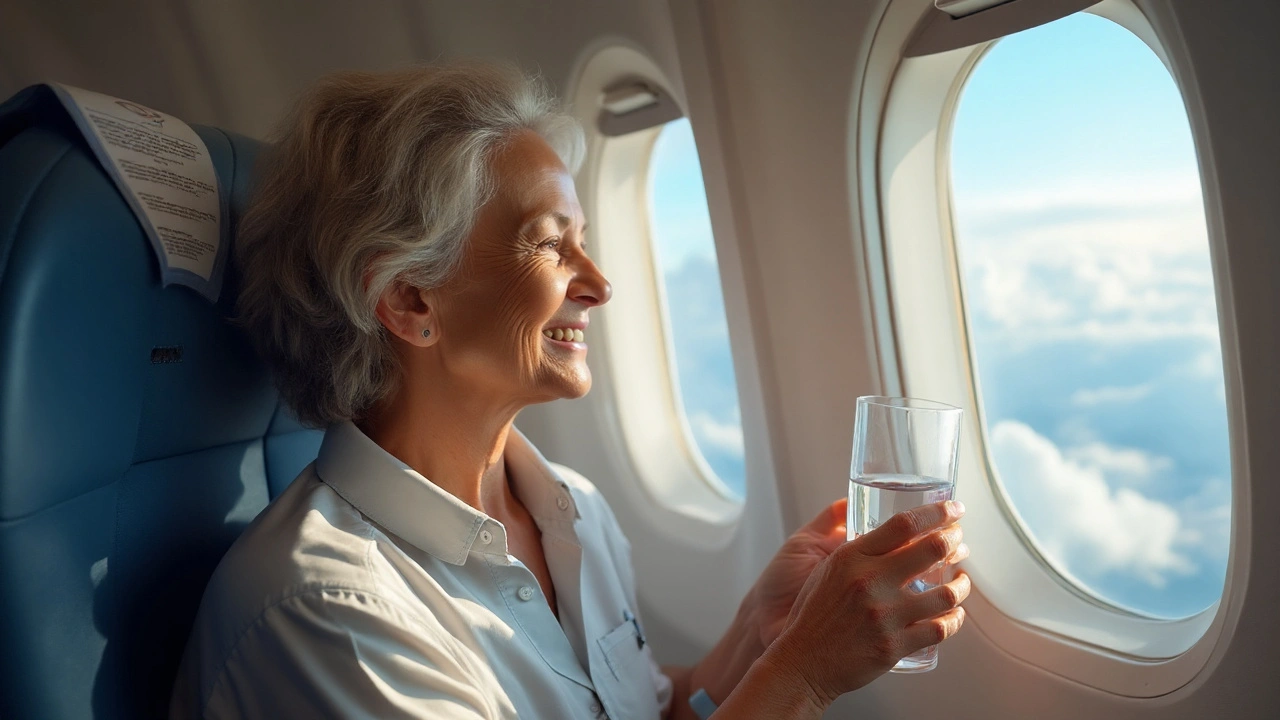Subarachnoid hemorrhage is a type of brain bleed that occurs in the space between the arachnoid membrane and the pia mater. It often results from a ruptured aneurysm and can cause sudden headache, loss of consciousness, and neurological deficits. While the acute phase demands intensive care, many survivors wonder how to resume travel and leisure without compromising safety.
Understanding Your Medical Baseline
Before you book a flight or sign up for a new hobby, get a clear picture of where you stand medically. A recent registry from the Australian Stroke Society reported that 68% of SAH survivors regain functional independence within six months, but the remaining 32% still experience lingering symptoms like fatigue or mild cognitive slowing.
Key checkpoints include:
- Recent CT scan or lumbar puncture results confirming no new bleeding.
- Blood pressure control - target 130/80 mmHg or lower, as hypertension is the leading trigger for re‑bleed.
- Medication review - especially anticoagulants or antiplatelet drugs that may need temporary adjustment.
- Neurological assessment - any lingering weakness, visual changes, or speech issues should be documented.
Choosing the Right Travel Mode
Air travel is often the biggest concern because cabin pressure changes can affect intracranial dynamics. Studies from the Royal Flying Doctor Service show that modern pressurised cabins maintain a cabin altitude of about 2,400 meters, which typically does not raise intracranial pressure in stable patients. Nonetheless, a short pre‑flight medical clearance is advisable.
When comparing air versus road travel, consider these factors:
| Factor | Air Travel | Road Travel |
|---|---|---|
| Cabin pressure impact | Minimal for stable patients | None |
| Length of uninterrupted sitting | 6‑8hrs typical | Flexible breaks |
| Access to medical care | In‑flight assistance, limited | Can stop at clinics |
| Fatigue level | Higher due to altitude | Lower, more control |
If you decide on a flight, request a wheelchair assistance, plan to stand and stretch every 30‑40 minutes, and stay hydrated. Carry a copy of your recent CT scan and a note from your neurologist describing any medication adjustments.
Insurance and Emergency Planning
Medical travel insurance that specifically covers subarachnoid hemorrhage is a must. Look for policies that include:
- Re‑hospitalisation for re‑bleed or post‑op complications.
- Evacuation to your home country or nearest tertiary centre.
- Coverage for repeat imaging (CT or MRI) abroad.
Keep an emergency card in your wallet with your neurologist’s contact, medication list, and a brief summary of your condition. In Australia, the Health Care Card can streamline access to public hospitals overseas that have reciprocal agreements.
Leisure Activities: What’s Safe and What’s Not?
Physical exertion that spikes blood pressure is the biggest red flag. That means high‑intensity interval training, heavy weightlifting, and deep‑water scuba diving are off‑limits for at least six months post‑hemorrhage, unless cleared by a specialist.
Here’s a handy guide to low‑impact vs moderate‑impact options:
| Activity | Impact Level | Blood‑Pressure Effect | Typical Recommendation |
|---|---|---|---|
| Walking (flat terrain) | Low | Minimal | Daily 30‑45min, unlimited |
| Yoga (gentle) | Low | Stabilises | 3‑4times/week, avoid inversions |
| Swimming (recreational) | Moderate | Modest rise | Up to 30min, no breath‑holding |
| Biking (flat, leisurely) | Moderate | Gradual increase | 2‑3times/week, keep cadence < 80rpm |
| Golf (walking) | Low‑Moderate | Varies with swing | Limit to 9 holes, avoid rapid swings |
| Dance classes (ballroom) | Moderate | Transient spikes | Short sessions, warm‑up & cool‑down |
What about altitude? A survey of climbers with a history of SAH showed that staying below 2,500m (8,200ft) prevents significant hypoxia‑induced blood‑pressure surges. If your trip involves mountain towns, plan a gradual ascent and monitor your BP daily.
Medication Management on the Road
Most survivors are on a regimen that includes a calcium‑channel blocker (e.g., nifedipine) and sometimes a low‑dose antiplatelet (e.g., aspirin) for secondary prevention. Carry a 30‑day supply in your hand luggage, and keep a pill organizer clearly labelled.
If you’re traveling across time zones, set reminders on your phone to maintain consistent dosing. Missing a dose can cause rebound hypertension, which is the fastest route back to a bleed.

Rehabilitation and Support Networks
Post‑SAH rehab typically blends physical therapy, speech therapy, and cognitive exercises. When you’re away from your home clinic, locate a local rehabilitation centre that offers outpatient services. Many Australian hospitals have tele‑rehab options, so you can log in to a session from a hotel room.
Joining a support group-either in‑person or online-helps manage the emotional roller‑coaster. A 2023 Australian cohort study found that participants who engaged in peer support reported a 22% higher quality‑of‑life score during travel.
Practical Packing Checklist
- Copy of recent imaging and neurologist’s note.
- Medication list with dosage and generic names.
- Portable blood‑pressure cuff (automatic upper‑arm models are easiest).
- Travel‑size pillow and compression socks for long journeys.
- Emergency contact card (include local hospital’s phone number).
- Medical alert bracelet stating "History of subarachnoid hemorrhage - requires immediate imaging if head trauma occurs."
When to Call a Doctor During Travel
Any of the following symptoms merit immediate medical attention:
- Sudden, severe headache unlike any you’ve felt before.
- New weakness or numbness in limbs.
- Blurred or double vision that doesn’t resolve.
- Unexplained confusion, slurred speech, or loss of balance.
- Persistent vomiting or nausea after a head injury.
Dial the local emergency number (e.g., 000 in Australia, 112 in Europe) and mention your SAH history so they can prioritize suitable imaging.
Looking Ahead: Building a Sustainable Travel Lifestyle
Once you’ve navigated the first few trips, the goal shifts from caution to confidence. Keep a travel journal noting which activities felt comfortable and which raised your BP. Over time you’ll develop a personalized "SAH‑friendly" activity matrix that lets you enjoy festivals, road trips, and even mild adventure sports without fear.
Remember, the brain’s healing capacity is remarkable, but it still respects limits. By staying informed, planning ahead, and keeping a safety net of medical support, you can explore new places while protecting your health.
Frequently Asked Questions
Can I fly within a month after a subarachnoid hemorrhage?
Most doctors recommend waiting at least 6‑8 weeks after the bleed and after a clean follow‑up CT scan before boarding a commercial flight. If you have no residual symptoms and your blood pressure is stable, short‑haul flights are usually safe.
Is scuba diving ever allowed for SAH survivors?
Scuba diving creates pressure changes that can raise intracranial pressure. Current guidelines advise avoiding diving for at least one year after a bleed, and only if a neurosurgeon gives explicit clearance.
What blood‑pressure target should I aim for while traveling?
Aim for ≤130/80mmHg. Carry a portable cuff, check twice daily, and adjust medication only under a doctor’s advice. Sudden spikes above 150mmHg warrant urgent medical review.
Are there any leisure activities that are absolutely prohibited?
High‑intensity sports that involve Valsalva maneuvers (heavy lifting, competitive rowing, contact martial arts) and any activity requiring rapid altitude changes (mountain climbing above 2,500m, skydiving) are generally contraindicated unless cleared by a specialist.
How can I find a local rehabilitation centre abroad?
Search for "neurological rehabilitation" plus the city name, then verify credentials through the country's health ministry website. Many centres accept tele‑consults, so you can coordinate your therapy plan before you arrive.
